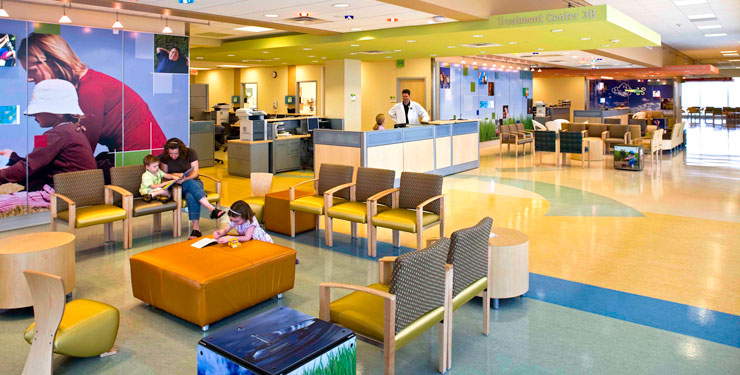
Delivering A Positive Patient Experience: The Impact Of A Holistic Customer Service Mindset

Every one of the 70,000-plus employees at Walt Disney World in Orlando, Fla., is referred to as a “cast member.” This term applies to those in costume performing as Disney characters, employees operating the rides, working in retail, and sweeping up The Happiest Place on Earth at the end of the day. Why does Disney bestow this title on every employee? The organization seeks to instill in its workers a sense that, no matter what roles they play, they are contributing to the brand’s success and that their “performance,” every day, plays an important part in ensuring customers are satisfied and that they come back.
Healthcare systems operate in a much different environment, but adopting a similar, customer service-centric mindset might be a change for the better. For healthcare systems, delivering quality patient care is obviously paramount, and today’s healthcare market is more consumer-driven than ever. The coronavirus pandemic forever altered the way patients think about and use healthcare. For example, more patients are comfortable with virtual care and have more options in terms of how and where they receive care. As such, it is essential for healthcare systems to consider brand and patient satisfaction in addition to the quality of care they deliver to attract and retain patients, stay competitive, and ensure funding from insurance companies.
The Patient Satisfaction Puzzle
Healthcare systems often rely on patient surveys to gauge patient satisfaction. While patient/caregiver interactions are the focus of most patient satisfaction surveys, there is more that contributes to the overall patient experience, including how caregivers and patients’ families interact. This underscores the importance of adopting a customer-service mindset to compete in the current healthcare climate.
Quality of care and patient experience includes everyone within the healthcare system—administration, doctors, nurses, and staff. Like Disney, every employee in a healthcare system plays a vital role and is responsible for the overall patient experience. This includes communicating with patients’ family members, who are often the ones answering questions or speaking to doctors and nurses, especially about follow-up information. These family members’ perspectives can also heavily influence the patient’s own perceptions of their experience.

The architecture and interior design of a facility communicates the social and cultural values of an organization.
In addition to the role every employee plays in the experience of patients and family members, facility design, image, and layout play critical roles in determining patient satisfaction. One recent study, for example, examined the link between a number of spatial layout measures and patient satisfaction. Researchers evaluated four layout measures—location of the first encounter, room handedness, average distance to the nurse station, and location of the bed. While noting that “further research should be conducted to understand the exact nature of the relationships,” the team concluded that a link exists between spatial layout and patient satisfaction.
Architecture and interior design communicate the social and cultural values of an organization, in other words, its identity. When considering how patients perceive the system, it is important for healthcare leaders to consider what the design of the facility, inside and out, says about their healthcare system. Looking at the layout, for example, leadership should consider several questions, such as:
- How easy is it to get from the parking facilities to the ER or lobby? Patients don’t need to compound their anxiety with concerns about how they get from their car to where they receive care and then back to their car.
- How confusing is the layout? Wayfinding and signage are critical for an easy-to-understand layout and limiting unnecessary stress.
- Can patients find their rooms? Patient’s comfort is critical, and they need to be able to easily get to and from their room at check-in and throughout their stay.
- Can patients easily reach the elevators on their floor? Mobility is obviously an issue for many patients, and making elevators easily accessible from patients’ rooms eases their burden.
Environmental Influence
Research has shown that a patient’s physical environment—lighting levels or the patient’s view from their bed/room—contributes to the patient’s experience. Thanks in part to the pandemic, biophilia—the innate human instinct to connect with nature and other people—has become even more top-of-mind across design disciplines, as it utilizes design concepts based on nature and natural elements for providing healthy and restorative settings. This includes a focus on integrating plants, natural materials, and even the circadian timing of lights to help better regulate people’s natural, internal rhythms throughout the day.
The materials and finishes used throughout the facility are also important. While cleanability and durability are critical, the choice of materials and finishes speaks volumes about the healthcare system. Some spaces can be seen as cold or uninviting while others are warm and convey trust. Consider the impression of a facility that stays with patients and their families. If a patient can be treated at any medical facility, the goal is to create a differential that sets one facility apart from the competition.

A facility’s choice of materials and finishes speaks can help create a warm, inviting, and supportive environment for patients and their families.
Even furniture choice has an impact on the patient experience. The furniture in a patient’s room conveys the level of importance or thought put into the patient’s comfort. Many times, comfort comes at the sake of cleanability and durability; consider the hard, foldout chairs that new fathers sleep on awaiting the birth of their child. Again, the perspective of the “non-patient,” family member can heavily play into the overall perception of your facility.
It’s also vital to keep these spaces well maintained as the state of lobbies, corridors, and exam rooms can heavily affect patients’ and family members’ opinions of the healthcare system. If someone comes in for a check-up and a wall in the exam room is scuffed up, and then the patient returns three months later and the scuffs are still there, that can contribute to a poor perception and lower level of trust in the system. If an organization can’t keep its own building healthy, one might wonder how that organization can keep patients healthy.
Making The Business Case
As it does in any business, customer satisfaction has a direct impact on the bottom line. The Hospital Consumer Assessment of Healthcare Providers and Systems (HCAHPS) scoring system captures patients’ perceptions of their hospital experience. The two largest insurance payment systems, Medicare and Medicaid, rely on these scores as part of their efforts to determine reimbursement, meaning that higher patient satisfaction scores correlate to better reimbursement rates for the healthcare systems.
Increasing patient satisfaction equates to improved net promoter scores as well, which drive profitability. Net promoter scores measure the loyalty of a company or organization’s customer base. Patient loyalty differs from patient satisfaction in that measuring loyalty gauges how likely an organization will retain a patient, whereas patient satisfaction scores are based more on how happy a patient was with a singular experience. People are more likely to recommend a health system or facility to their friends and family if they have a good experience.
Retaining talented healthcare providers is just as important as retaining patients. Employee turnover costs are steep and on the rise. Healthcare workers are consistently ranked among the most stressed, which leads to increased turnover and staffing challenges that can ultimately affect care. The work experience of caregivers is just as important as the healing experience of patients, as they are on long shifts and dealing with people at their worst. Enhancing caregivers’ lives better prepares them to help those in need.
Operating in an evolving business landscape, hospital systems can differentiate their “brand” in order to compete. A patient’s perception of their experience with a healthcare brand will stay with them and will become further entrenched as time passes. Systems and facilities need to focus on a customer-service mindset to set themselves apart, and to maintain high patient satisfaction scores, which have a significant impact on financial performance.
This article was originally published by Healthcare Business Today
Author
Content Type
Published Articles
Date
June 20, 2023
Market
Topic
Healthcare Design



